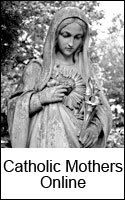
Padre Pio was amazing. He was also kind of scary. I'm not sure I would want to know someone that could see the state of my soul and all my sins, providing the grace of sincere repentence. Excruciating.
How painful this must have been for him also.
His ability to
bilocate has always peaked my curiosity. I can't seem to multi-task very well, but to be present in two locations at once, carry on different conversations - it's our "darkened by sin" definition of mind-bloggling. Remarkably, that was only one of his many charisms, which included the stigmata, miraculous scents, prophecy, reading hearts, healing and interpreting languages.
I was thinking about Padre Pio's ability to do the physically impossible recently while I was reading the book, similarly titled,
Physics of the Impossible, A Scientific Exploration into the World of Phasers, Force Fields, Teleportation and Time Travel. The book, as far as I can tell since I'm only a few chapters into it, doesn't specifically address bilocation, which some physicists argue could be possible if
string theory advanced further. Kind of like Mike TeeVee on Willy Wonka, except instead of getting sent from one place to another (teleportation), is actually in two places...or another. According to what we currently know for Padre Pio to bilocate, all the atoms in his body would have to coherently move together across space and time. Unfortunately, the foundation of quantum mechanics is based on (Heisenberg) uncertainty, probability (Schrodinger), and chance (Born), which present some difficulties in allowing Padre Pio to visit pilots in their flying aircraft or visit places like the US and the Holy Land, all while still in his room at San Giovanni Rotondo.
"As to how Padre Pio with God's help accomplished such feats, the closest he ever came to an explanation of bilocation was to say that it occurred
'by an extension of his personality.'" This makes perfect sense considering what we know from St. Thomas Aquinas and others about the nature of God. Interesting how God allows these small glimpses, graces, into the spiritual world while we struggle to explain and then bottle them.
Of all things seen and unseenSome of the things discussed in the book are fascinating for Trekkies and Sci Fi fans, other things get a little "far out," dude.
And, some things mentioned may have even made for a better story:
To make Harry Potter invisible, one would have to liquefy him, boil him to create stream, crystallize him, heat him again, and then cool him, all of which would be quite difficult to accomplish, even for a wizard.
My kids want to be invisible. Somedays, I'd like to be invisible. It's something every mom should have a golden ticket to do once a year. But the reality, or "supernaturality," are difficult to grasp on so many levels.
Pope John Paul II, speaking in his
General Audience 9 July 1986, on the topic of angels and the invisible, said, "We cannot conclude our catechesis on God, Creator of the world, without devoting adequate attention to a precise item of divine revelation, "the creation of purely spiritual beings which Sacred Scripture calls "angels." This creation appears clearly in the creeds, especially in the Nicene-Constantinopolitan Creed: "I believe in one God, the Father Almighty, Creator of heaven and earth, of all things (that is entia or beings) seen and unseen." We know that man enjoys a unique position within the sphere of creation. By his body he belongs to the visible world, while by his spiritual soul which vivifies the body, he is as it were on the boundary between the visible and invisible creation. According to the creed which the Church professes in the light of revelation, other beings which are purely spiritual belong to the invisible creation. Therefore they are not proper to the visible world, even though present and working therein. They constitute a world apart."
If I can't be invisible or bilocate, at least, for the sake of homeschooling moms, let holodecks be possible.
Photo: Cathedral by Jacek Yerka

































